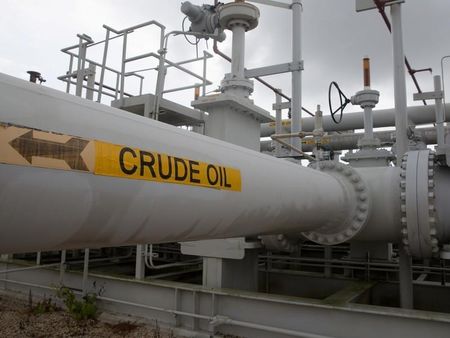Commodities
Oil prices supported by Middle East tensions ; US inventory build limits gains

Investing.com — Oil prices edged higher Thursday as concerns over Middle East tensions weighing on global supplies overshadowed a surprise build in U.S. inventories.
At 07:35 ET (11:35 GMT), rose 0.4% to $84.81 a barrel, while gained 0.4% to $81.25 a barrel.
Middle East tensions rise
Concerns over the potential for the Israel-Hamas war in Gaza to spread throughout the Middle East, an oil-rich region, has provided underlying support for the market for some time now.
Cross-border strains between Israel and Lebanon’s Hezbollah have been escalating in recent weeks, and Turkish President Tayyip Erdogan added to these by saying his country stood in solidarity with Lebanon and called on the region’s countries to show their support.
This raised fears other regional powers could be drawn into the conflict, including major oil producer Iran.
Meanwhile, Israeli forces continued to bombard Gaza, in its prolonged war with the Iranian-backed Hamas militant group
US inventories unexpectedly grow, gasoline inventories surge
Government data released on Wednesday showed that U.S. grew about 3.6 million barrels (mb) in the week to June 21, confounding expectations for a draw of 2.6 mb.
More worrying was a 2.7 mb build in , which indicated that fuel consumption remained weak even with the onset of the travel-heavy summer season.
The inventory build ramped up concerns that U.S. fuel demand was slowing, especially as the country grapples with sticky inflation and high interest rates.
“Despite lower refinery activity, gasoline stocks still increased by 2.65m barrels. Implied gasoline demand was weaker over the period, falling 417k b/d WoW. This will not help ease gasoline demand concerns as we move deeper into the summer,” analysts at ING said, in a note.
Strong dollar weighs on oil, economic cues awaited
A strong – which hit a two-month high on Wednesday- has weighed on oil prices this week, making the commodity more expensive for foreign buyers.
A revised reading for the first quarter is due later on Thursday, but more closely watched will be Friday’s , which is the Federal Reserve’s preferred inflation gauge.
Markets were also looking to the first U.S. Presidential debate, which is set to take place between Democrat and Republican candidates Joe Biden and Donald Trump later on Thursday.
(Ambar Warrick contributed to this article.)
Commodities
Oil prices rise; U.S. crude inventories plunge, Russia-Ukraine truce eyed
Commodities
India’s Reliance to stop buying Venezuelan oil over US tariffs, sources say
Commodities
Oil prices climb on Venezuela supply worries

 Forex3 years ago
Forex3 years agoForex Today: the dollar is gaining strength amid gloomy sentiment at the start of the Fed’s week

 Forex3 years ago
Forex3 years agoUnbiased review of Pocket Option broker

 Forex3 years ago
Forex3 years agoDollar to pound sterling exchange rate today: Pound plummeted to its lowest since 1985

 Forex3 years ago
Forex3 years agoHow is the Australian dollar doing today?

 Cryptocurrency3 years ago
Cryptocurrency3 years agoWhat happened in the crypto market – current events today

 World3 years ago
World3 years agoWhy are modern video games an art form?

 Commodities3 years ago
Commodities3 years agoCopper continues to fall in price on expectations of lower demand in China

 Economy3 years ago
Economy3 years agoCrude oil tankers double in price due to EU anti-Russian sanctions



























